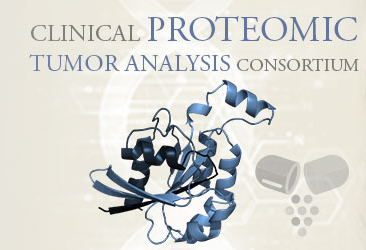Summary
This collection contains subjects from the National Cancer
Institute’sInstitute’s Clinical Proteomic Tumor Analysis Consortium Acute Myeloid Leukemia (CPTAC-AML) cohort. CPTAC is a national effort to accelerate the understanding of the molecular basis of cancer through the application of large-scale proteome and genome analysis, or proteogenomics. Radiology and pathology images from CPTAC patients are being collected and made publicly available by The Cancer Imaging Archive to enable researchers to investigate cancer phenotypes which may correlate to corresponding proteomic, genomic and clinical data.
Imaging from each cancer type will be contained in its own TCIA Collection, with the collection name "CPTAC-cancertype". Radiology imaging is collected from standard of care imaging performed on patients immediately before the pathological diagnosis, and from follow-up scans where available. For this reason the radiology image data sets are heterogeneous in terms of scanner modalities, manufacturers and acquisition protocols. Pathology imaging is collected as part of the CPTAC qualification workflow.
All CPTAC cohorts are released as either a single combined cohort, or split into Discovery and Confirmatory where applicable. There are two main types of proteomic studies: discovery proteomics and targeted proteomics. The term "discovery proteomics" is in reference to "untargeted" identification and quantification of a maximal number of proteins in a biological or clinical sample. The term “targeted proteomics” refers to quantitative measurements on a defined subset of total proteins in a biological or clinical sample, often following the completion of discovery proteomics studies to confirm interesting targets selected. Commonly used proteomic technologies and platforms are different types of mass spectrometry and protein microarrays depending on the needs, throughput and sample input requirement of an analysis, with further development on nanotechnologies and automation in the pipeline in order to improve the detection of low abundance proteins, increase throughput, and selectively reach a target protein in vivo. Once the protein targets of interest are identified, high-throughput targeted assays are developed for confirmatory studies: tests to affirm that the initial tests were accurate. A summary of CPTAC imaging efforts can be found on the CPTAC Imaging Proteomics page.
CPTAC Imaging Special Interest Group
You can join the CPTAC Imaging Special Interest Group to be notified of webinars & data releases, collaborate on common data wrangling tasks and seek out partners to explore research hypotheses! Artifacts from previous webinars such as slide decks and video recordings can be found on the CPTAC SIG Webinars page.
Acknowledgements
We would like to acknowledge the individuals and institutions that have provided data for this collection:
...
